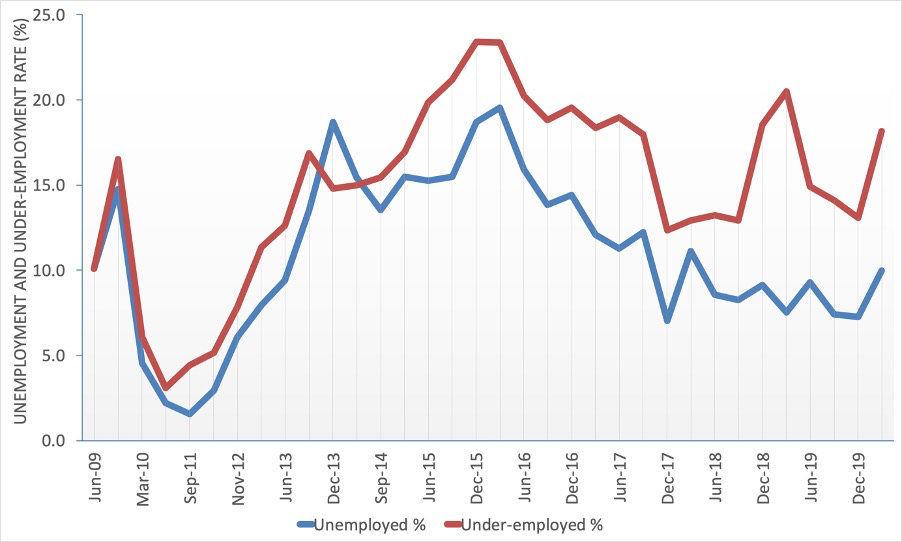
Unemployment amongst Australia’s geoscientists increased to 10% at the end of the March 2020 quarter compared to 7.3% at the end of the 2019 December quarter, a report by the Australian Institute of Geoscientists reveals.
When disaggregating the numbers by state, the document shows that unemployment grew dramatically in South Australia, where it reached 13.8%, followed by Victoria with 11.1% and Western Australia with 1.6%. In Queensland, on the other hand, the figures remained almost the same as those of December 2019.
6% of respondents were looking to pursue careers beyond geosciences on a long-term basis, while 12% were seeking work to help them deal with current employment conditions
“Widespread speculation that the coronavirus pandemic would have a rapid and dramatic impact on geoscientist employment across Australia, where more than 70% of geoscientists work in mineral and energy resource exploration, mining and production, isn’t borne out by the latest survey results,” the Institute’s president, Andrew Waltho, said in a media statement.
According to Waltho, the first quarter of each year is frequently marked by an upturn in unemployment, with exploration fieldwork in particular reduced following the summer holidays and northern Australian wet season. However, in his view, things could be worse.
“We have not to date seen anything like the dramatic downturn in employment associated with the global financial crisis in 2009,” the executive said. “It is a welcoming sign to see that many employers, so far, have been able to retain geoscientist staff, demonstrating a commitment to both their people and business resilience.”

In Waltho’s view, long-term unemployment remains the most worrisome aspect of the Institute’s survey, with almost 29% of respondents reporting that they have been out of work for more than 12 months.
According to the report, underemployment amongst self-employed geoscientists was also significant in Q1-2020, rising to 18.1% from 13.1% in the previous quarter.
“Self-employed geoscientists working as consultants and contractors are experiencing a downturn in their ability to secure work greater than is normally evident at this time of year, which we should expect to be reflected in exploration and mineral resource production,” Waltho said.